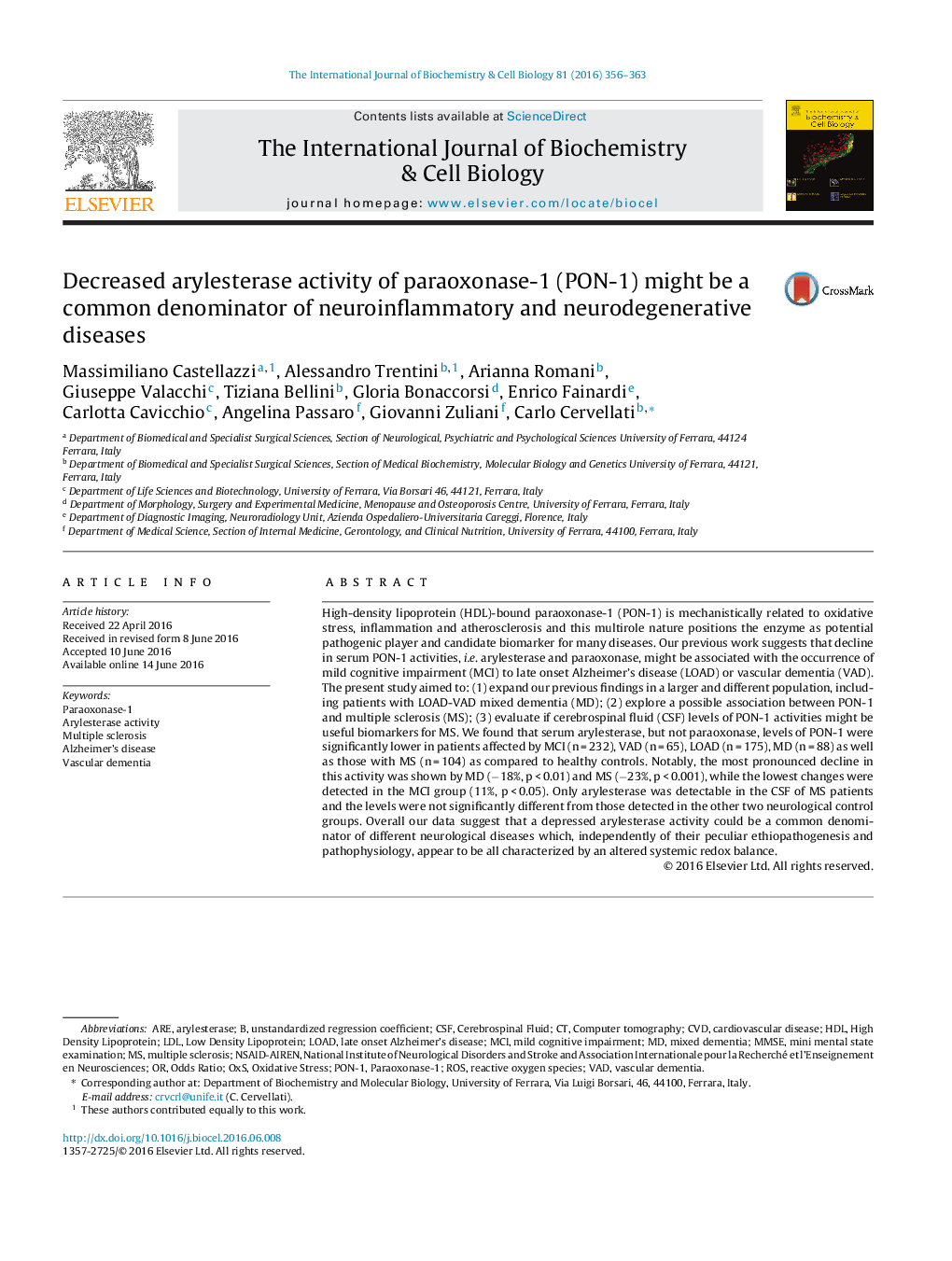| Article ID | Journal | Published Year | Pages | File Type |
|---|---|---|---|---|
| 5511483 | The International Journal of Biochemistry & Cell Biology | 2016 | 8 Pages |
High-density lipoprotein (HDL)-bound paraoxonase-1 (PON-1) is mechanistically related to oxidative stress, inflammation and atherosclerosis and this multirole nature positions the enzyme as potential pathogenic player and candidate biomarker for many diseases. Our previous work suggests that decline in serum PON-1 activities, i.e. arylesterase and paraoxonase, might be associated with the occurrence of mild cognitive impairment (MCI) to late onset Alzheimer's disease (LOAD) or vascular dementia (VAD). The present study aimed to: (1) expand our previous findings in a larger and different population, including patients with LOAD-VAD mixed dementia (MD); (2) explore a possible association between PON-1 and multiple sclerosis (MS); (3) evaluate if cerebrospinal fluid (CSF) levels of PON-1 activities might be useful biomarkers for MS. We found that serum arylesterase, but not paraoxonase, levels of PON-1 were significantly lower in patients affected by MCI (n = 232), VAD (n = 65), LOAD (n = 175), MD (n = 88) as well as those with MS (n = 104) as compared to healthy controls. Notably, the most pronounced decline in this activity was shown by MD (â18%, p < 0.01) and MS (â23%, p < 0.001), while the lowest changes were detected in the MCI group (11%, p < 0.05). Only arylesterase was detectable in the CSF of MS patients and the levels were not significantly different from those detected in the other two neurological control groups. Overall our data suggest that a depressed arylesterase activity could be a common denominator of different neurological diseases which, independently of their peculiar ethiopathogenesis and pathophysiology, appear to be all characterized by an altered systemic redox balance.
